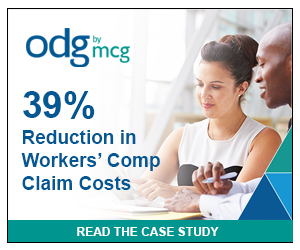Analyzing Self-Insurance as an Option, Part 1
Sunday, March 31, 2002 | 0
With workers' compensation insurance premiums rising at a record pace, many employers are reviewing alternate methods to finance their workers' compensation programs. One method is self-insurance.
Workers' compensation has several unique aspects that lend itself to self-insurance:
- There is a statutory cap on loss wage benefits. This brings an element of certainty to the severity of losses.
- The payment of large claims is spread over time providing cash-flow advantages.
- Typically, workers' compensation loss patterns are high volume, low severity. This quality translates to fairly predictable loss forecasting analysis.
However, a careful analysis must be performed to determine if self-insurance will suit the needs of your organization. The decision to self-insure cannot be made in isolation. There must be careful consideration of a number of factors for a self-insurance program to be successful: management's commitment to the program, the financial condition of the organization, the cost and availability of internal and external support systems, and the particular characteristics of the exposure. The likelihood of a successful self-insurance program is dependent on the inclusion of all of these elements in the decision-making process. We'll look at management's perspective and the financial aspects in this article. The next article will review infrastructure and operations.
Management's Perspective
Any evaluation of the feasibility of a workers' compensation self-insurance program within your organization must start with an analysis of management's view of risk and their commitment to this type of program.
A key element is that an organization trades known risk for unknown risk by moving to a self-insurance program. Management must demonstrate the risk tolerance necessary for a long-term commitment to self-insurance. Self-insurance is not a band-aid to bridge market conditions.
Management on down to the line workers must also be willing to be very proactive role in accident prevention because the money and time spent on accident prevention has a direct and immediate correlation to the program's financial bottom line.
Financial Feasibility
Another very obvious consideration in analyzing the viability of a self-insurance programs is the financial condition of the organization and the financial resources that will be needed to fund the program at startup and into the future.
An organization with strong cash flow or substantial cash reserves is in a better position to be self-insured than one without. Financial strength is especially important since self-insurance exposes the organization to larger fluctuations in earnings than it experiences under most insurance programs.
Most states have minimum net worth requirement for employers to be eligible for self-insurance. Organizations should check the financial eligibility requirements in the states they operate in first since they might be immediately disqualified by this requirement - that way no further resources are needlessly expended in the analysis of a self-insurance move.
This article, and others, are available for sponsorship. Contact sales@workcompcentral.com for more information.




Comments